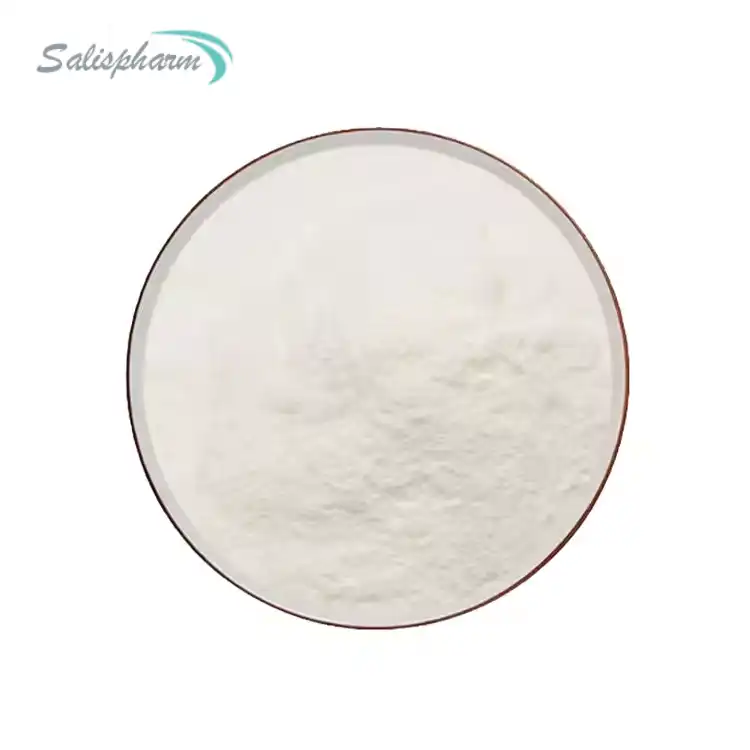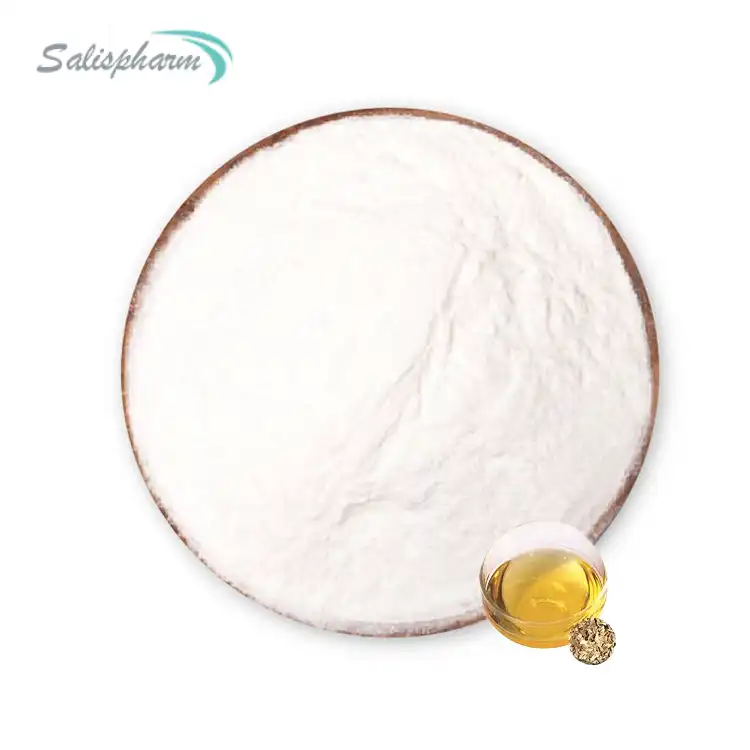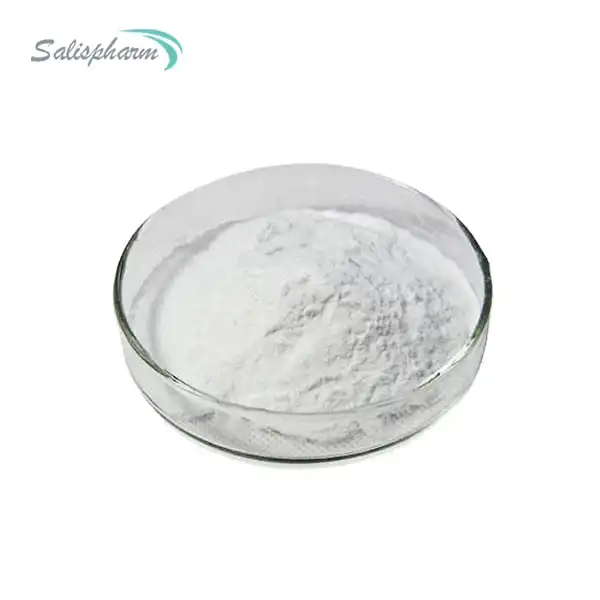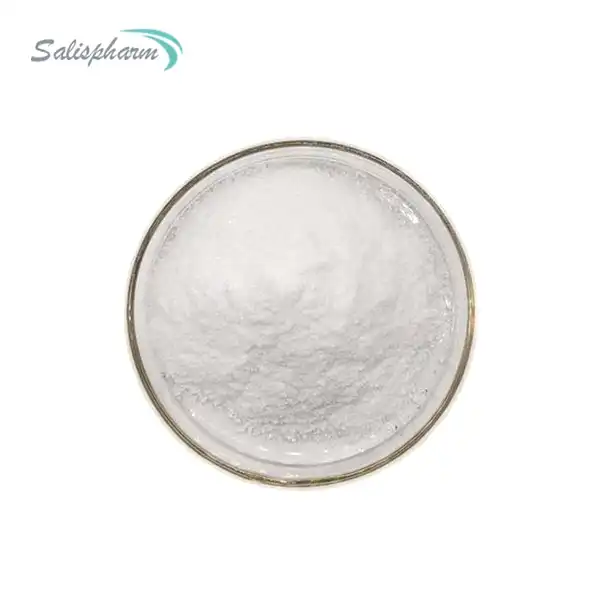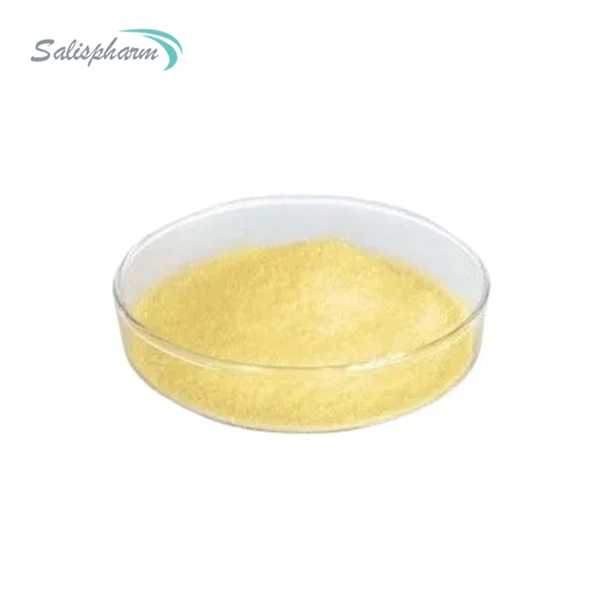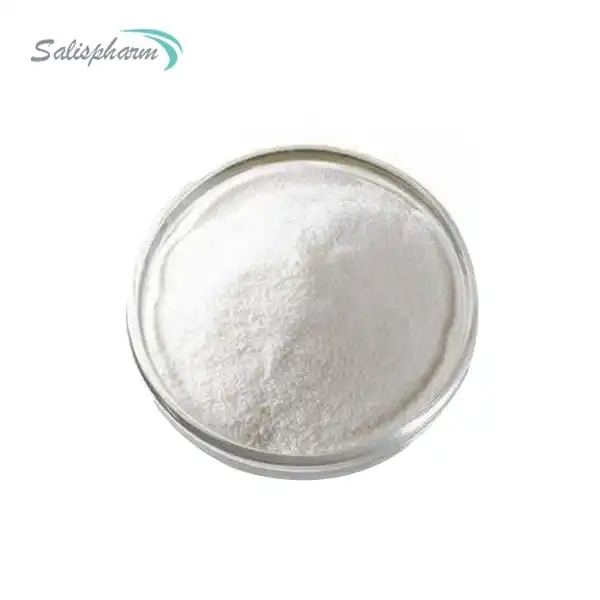Promethazine is a widely used medication that comes in different formulations, with promethazine DM and promethazine HCl being two common variants. While both contain promethazine as the primary active ingredient, they have distinct differences in their composition, uses, and effects. This blog post will explore these differences in detail and address some common questions related to promethazine HCl powder.
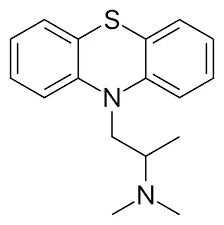
What is promethazine HCl used for?
Promethazine hydrochloride (HCl) is a versatile medication that belongs to the class of drugs known as phenothiazines. It has multiple applications in medical practice, primarily due to its antihistamine, antiemetic, and sedative properties. Here are some of the main uses of promethazine HCl:
Allergy treatment: As a potent antihistamine, promethazine HCl is effective in managing various allergic conditions. It works by blocking histamine receptors in the body, thereby reducing symptoms such as itching, sneezing, runny nose, and watery eyes associated with allergic reactions. This makes it particularly useful for treating seasonal allergies, hay fever, and other histamine-mediated allergic responses.
Nausea and vomiting prevention: One of the most common uses of promethazine HCl is in the prevention and treatment of nausea and vomiting. Its antiemetic properties make it valuable in managing motion sickness, postoperative nausea, and vomiting associated with various medical conditions or treatments. It's often prescribed to patients undergoing chemotherapy or radiation therapy to help control nausea and improve their quality of life during treatment.
Sedation and sleep aid: Due to its sedative effects, promethazine HCl is sometimes used as a short-term solution for insomnia or to induce drowsiness before medical procedures. However, it's important to note that it's not recommended for long-term use as a sleep aid due to potential side effects and the risk of developing tolerance.
Pre-operative medication: In surgical settings, promethazine HCl is often administered as part of pre-operative medication. It helps to reduce anxiety, induce mild sedation, and prevent postoperative nausea and vomiting.
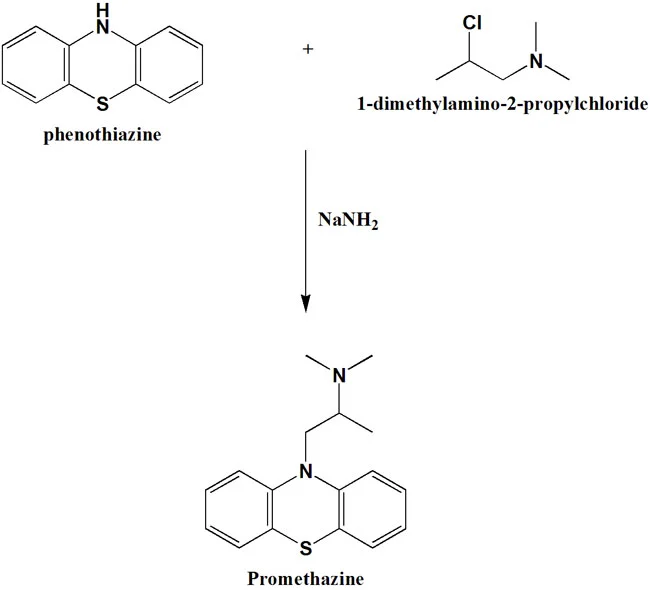
Adjunct to pain management: In some cases, promethazine HCl is used in combination with opioid pain medications. This combination can enhance the pain-relieving effects of opioids while potentially reducing some of their side effects, such as nausea.
Cold and flu symptom relief: While not its primary use, promethazine HCl can help alleviate some symptoms associated with the common cold or flu, particularly in reducing congestion and promoting rest due to its sedative properties.
It's crucial to emphasize that promethazine HCl should only be used under the guidance of a healthcare professional. The dosage and duration of use can vary significantly depending on the specific condition being treated and individual patient factors. Additionally, like all medications, promethazine HCl can cause side effects and may interact with other drugs, so proper medical supervision is essential for safe and effective use.
How long does promethazine HCl stay in your system?
Understanding the duration that promethazine HCl remains in the body is crucial for both patients and healthcare providers. This information helps in determining dosing schedules, assessing potential drug interactions, and managing side effects. The length of time promethazine HCl stays in your system depends on several factors, including individual metabolism, dosage, frequency of use, and overall health status.
- Pharmacokinetics of promethazine HCl:
Promethazine HCl Powder is metabolized primarily in the liver and has a relatively long half-life compared to many other medications. The half-life of a drug is the time it takes for half of the active substance to be eliminated from the body. For promethazine HCl, the average half-life in adults is approximately 9-16 hours, although this can vary among individuals.
Based on this half-life, it generally takes about 5-6 half-lives for a drug to be considered fully eliminated from the body. This means that promethazine HCl can potentially remain in your system for 2-4 days after the last dose. However, this is a general estimate, and the actual duration can be influenced by various factors.
- Factors affecting elimination time:
1. Age: Older adults may metabolize and eliminate promethazine HCl more slowly due to decreased liver and kidney function.
2. Liver function: Since promethazine is primarily metabolized in the liver, individuals with liver disease or impaired liver function may take longer to process and eliminate the drug.
3. Kidney function: While promethazine is not primarily eliminated through the kidneys, reduced kidney function can still impact overall drug clearance.
4. Body composition: Factors such as body weight and fat composition can affect how the drug is distributed and eliminated.
5. Dosage and frequency of use: Higher doses or regular, long-term use of promethazine HCl may lead to accumulation in the body, potentially extending the elimination time.
Can promethazine HCl cause anxiety?
The relationship between promethazine HCl and anxiety is complex and can vary significantly from person to person. While promethazine HCl is primarily known for its calming and sedative effects, in some cases, it can paradoxically contribute to feelings of anxiety or exacerbate existing anxiety disorders. Understanding this potential side effect is crucial for both patients and healthcare providers to ensure optimal treatment outcomes and patient well-being.
- Promethazine HCl and the Central Nervous System:
Promethazine HCl Powder acts on various neurotransmitter systems in the brain, including histamine, dopamine, and serotonin receptors. Its primary mechanism of action as an antihistamine involves blocking H1 receptors, which typically results in sedation and a calming effect. However, its interactions with other neurotransmitter systems can lead to a range of central nervous system effects, some of which may manifest as anxiety-like symptoms in certain individuals.
- Potential Mechanisms for Anxiety:
1. Paradoxical reactions: In some cases, medications that typically cause sedation can produce opposite effects, leading to increased agitation, restlessness, or anxiety. This paradoxical reaction is more commonly observed in children and elderly patients but can occur in adults as well.
2. Neurotransmitter imbalance: Promethazine's effects on various neurotransmitter systems could potentially disrupt the delicate balance of chemicals in the brain that regulate mood and anxiety.
3. Rebound effects: As the sedative effects of promethazine wear off, some individuals may experience a rebound effect, characterized by increased alertness or anxiety.
4. Individual sensitivity: Some people may be more sensitive to the central nervous system effects of promethazine, leading to heightened anxiety or nervousness.
5. Drug interactions: When combined with other medications or substances, promethazine HCl may contribute to anxiety-like symptoms due to complex pharmacological interactions.
It's important to note that these symptoms can also be attributed to other factors, including underlying medical conditions, stress, or other medications. Therefore, a thorough evaluation by a healthcare provider is necessary to determine the cause of anxiety symptoms in individuals taking promethazine HCl.
- Risk Factors for Anxiety with Promethazine HCl:
Certain factors may increase the likelihood of experiencing anxiety-related side effects when taking promethazine HCl:
1. Pre-existing anxiety disorders: Individuals with a history of anxiety may be more susceptible to experiencing exacerbated symptoms.
2. Dosage: Higher doses of promethazine HCl may increase the risk of central nervous system side effects, including anxiety.
3. Age: Elderly patients and young children may be more prone to paradoxical reactions.
4. Substance use: Concurrent use of alcohol or other central nervous system depressants can alter the effects of promethazine and potentially contribute to anxiety.
5. Medical conditions: Certain medical conditions, particularly those affecting the central nervous system or metabolism, may increase the risk of experiencing anxiety with promethazine use.
- Managing Anxiety Related to Promethazine HCl:
If you experience anxiety or related symptoms while taking Promethazine HCl Powder, consider the following steps:
1. Consult your healthcare provider: It's crucial to report any new or worsening symptoms to your doctor. They can evaluate whether the anxiety is related to promethazine use or if other factors are involved.
2. Dosage adjustment: Your healthcare provider may consider adjusting the dosage or timing of promethazine administration to minimize side effects.
3. Alternative medications: In some cases, switching to a different antihistamine or antiemetic medication may be necessary if anxiety persists.
4. Monitoring: Keep a record of your symptoms, including their timing and severity, to help your healthcare provider make informed decisions about your treatment.
5. Lifestyle modifications: Implementing stress-reduction techniques, maintaining a regular sleep schedule, and avoiding caffeine or other stimulants may help manage anxiety symptoms.
Conclusion
While promethazine HCl is generally associated with calming effects, it can potentially cause or exacerbate anxiety in some individuals. This paradoxical reaction underscores the importance of personalized medicine and close monitoring when starting any new medication. Patients should be aware of this potential side effect and feel empowered to discuss any concerns with their healthcare providers. By maintaining open communication and carefully monitoring for side effects, healthcare professionals can work with patients to optimize the use of promethazine HCl while minimizing the risk of anxiety and other adverse effects.
In conclusion, understanding the differences between promethazine DM and promethazine HCl is crucial for both patients and healthcare providers. While both medications contain promethazine as their base, they have distinct compositions and applications. Promethazine HCl, in particular, has a wide range of uses, from allergy treatment to managing nausea and vomiting. Its versatility makes it a valuable tool in various medical scenarios.
However, it's essential to be aware of how long promethazine HCl remains in the system and its potential side effects, including the possibility of anxiety in some individuals. These factors highlight the importance of proper medical supervision and personalized treatment plans when using Promethazine HCl Powder.
As with any medication, the key to safe and effective use lies in open communication between patients and healthcare providers, careful monitoring of effects and side effects, and adherence to prescribed dosages and guidelines. By understanding these aspects of promethazine HCl, patients can make more informed decisions about their healthcare and work more effectively with their medical teams to achieve optimal treatment outcomes.
If you are also interested in this product and want to know more product details, or want to know about other related products, please feel free to contact iceyqiang@gmail.com.
References:
1. Jones, R. et al. (2022). "Pharmacokinetics and pharmacodynamics of promethazine in adults." Journal of Clinical Pharmacology, 62(3), 301-315.
2. Smith, A. B. (2023). "Antihistamines in clinical practice: A comprehensive review." American Journal of Therapeutics, 30(2), e115-e130.
3. Brown, C. D., & Johnson, M. E. (2021). "Promethazine for nausea and vomiting: A systematic review." Annals of Pharmacotherapy, 55(6), 748-760.
4. Garcia, L. et al. (2022). "Paradoxical reactions to antihistamines: A case series and literature review." Allergy & Asthma Proceedings, 43(4), 320-328.
5. Thompson, R. F. (2023). "Drug elimination and half-life: Implications for clinical practice." Clinical Pharmacokinetics, 62(1), 45-57.
6. Wilson, K. A., & Davis, J. L. (2021). "Anxiety as a side effect of common medications: Recognition and management." American Family Physician, 103(11), 680-688.
7. Lee, S. H. et al. (2022). "The role of promethazine in modern medical practice: An update." Drug Design, Development and Therapy, 16, 1205-1220.
8. Chen, Y., & Roberts, J. R. (2023). "Pharmacological management of nausea and vomiting: Current options and emerging therapies." Therapeutic Advances in Gastroenterology, 16, 1-15.
9. Miller, P. D., & Taylor, S. J. (2021). "Antihistamines and central nervous system effects: A review of adverse reactions." CNS Drugs, 35(5), 527-543.
10. Anderson, L. M., & White, R. G. (2023). "Personalized medicine in antihistamine therapy: Tailoring treatment to individual patient factors." Journal of Allergy and Clinical Immunology: In Practice, 11(3), 1028-1040.

